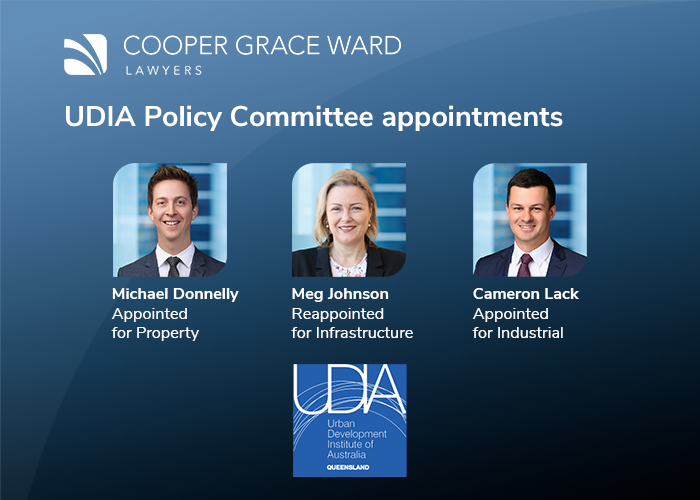The importance of biosecurity laws
Biosecurity outbreaks can have devastating consequences for human health, animal welfare, the environment and industry profitability. In Queensland, a strong yet complex legal and regulatory framework is in place to prevent such outbreaks. Navigating these laws can be challenging, but understanding them is crucial for all stakeholders.
The Biosecurity Act 2014 (Qld) establishes a general biosecurity obligation that requires everyone to actively manage and respond to biosecurity risks. Comprehensive regulatory powers and measures under the Act and its accompanying Regulation support a risk-based approach to biosecurity, enabling rapid responses to emergencies. These include biosecurity emergency orders, movement control orders and biosecurity zone regulatory provisions, all designed to mitigate risks and manage outbreaks effectively.
Compliance with these laws is vital for maintaining public health, protecting animal welfare, preserving the environment and ensuring industry viability. By staying informed and proactive in fulfilling biosecurity obligations, all stakeholders can contribute to a safer and more resilient biosecurity landscape.
Biosecurity management plans
One of the ways biosecurity risk is regulated is through the use of a biosecurity management plan (BMP).
What is a BMP?
A BMP is a written plan that must:
- state the reasonable measures to prevent, control and stop the spread of biosecurity matters into, at or from a particular place
- be its own separate document
- be kept at the relevant place
- be available for inspection at the place on request during ordinary business hours
- be supported by signage displayed at the managed area identifying that the place is subject to a BMP and warning that it is an offence for a person entering, present or leaving the area to fail to comply with the measures in the plan unless the person has a reasonable excuse.
Who must make a BMP?
BMPs must be made by a registered biosecurity entity. This is a person who keeps the threshold number or more of designated animals or holds a threshold amount or more of designated biosecurity matter. For animals, generally the threshold is one animal that is livestock (cattle, sheep, pigs etc.), one hive for bees and 100 chickens or other designated birds. The intention of the Biosecurity Act is to cast a broad net to tightly regulate potential biosecurity risks.
Consequences for non-compliance
The Biosecurity Act contains a general offence provision and specific offence provisions. It also contains aggravated offence provisions that carry harsher penalties. Under the general offence provision, penalties range from $80,540 to $161,300 penalty units or, if applicable, between six months to one year imprisonment.
Who must comply with a BMP?
All people entering, present and leaving a management area must comply with the applicable BMP unless an exception applies. Three exceptions exist to this general rule:
- the person does not know, and could not reasonably have known, a BMP applied to the management area
- there is no proper signage as required by the regulations
- the person is required or permitted, under an Act, to enter the management area.
Lang v Westside Corporation Pty Ltd
Background facts
The owners of a cattle property (who were the registrable biosecurity entity and the applicants for orders from the Supreme Court) made a BMP relating to their property. The owners were concerned about the long-term effect of chemicals and the treatment and control of weeds on the property. They had become involved in an ongoing dispute with the respondent company. The company was the operator of an unincorporated petroleum joint venture under a petroleum lease granted under the Petroleum Act 1923 (Qld) (PL Act).
While the owner and company had entered into conduct and compensation agreements, they were entered before the amendments in 2019 to the Biosecurity Act (when BMPs were introduced into law). The compensation arrangements had not been updated.
The dispute between the owners and company was whether the company was obliged to comply with the owner’s BMP. The owners contended that the company was required to do so as a person accessing the managed area. To force compliance, the owners applied for an injunction from the Supreme Court restraining the company from accessing their property unless the company provided a written undertaking to the Court that it would comply with the BMP.
The company opposed the application. It argued that it was exempt from complying with the BMP because it was permitted by the PL Act, through its petroleum lease, to enter the management area. The company emphasised that it was already required to comply with biosecurity obligations by force of arrangements arising under the PL Act and other associated legislation.
The owners disagreed. They argued that it was the petroleum lease and not the PL Act that was the source of the right to enter the management area and that the exception did not apply.
The Chief Justice of Queensland heard the matter as a separate question in the case. Separate questions involve the Court answering a precise question that may resolve some or all of the issues. In an appropriate case, it can be an effective way to resolve a case.
The question posed for the Court to answer was:
On the assumption that the applicants:
(a) are a registered biosecurity entity; and
(b) have made a biosecurity management plan under s 94G(1) of the Regulation; and
(c) have complied with s 94G(4) of the Regulation,
is the respondent required by s 94H of the Biosecurity Regulation to comply with the applicants’ biosecurity management plan when entering and working on the applicants’ land?
The parties made competing arguments about the proper interoperation of the biosecurity laws. These arguments required the Court to consider the legislative history of both the Biosecurity Act and the PL Act, as well as related legislation, including the Petroleum and Gas (Production and Safety) Act 2004 (Qld) and the Mineral and Energy Resources (Common Provisions) Act 2014 (Qld).
The decision
Chief Justice Bowskill decided the matter against the owners. The Chief Justice found:
The legislative scheme is complex. However, the relatively brief summary of it set out above, taken together with the meaning of the words “under an Act”, suffices to demonstrate that the respondent’s submission, that it is “permitted, under an Act, to enter” the relevant land, is correct and should be accepted. The right of entry is conferred under the Petroleum Act 1923, in the sense that that legislation is the source of the power for the petroleum lease, and which confers on the holder(s) the right of entry. The exercise of the right is regulated, among other things, by the Petroleum Act 1923 (as amended), the Common Provisions Act and Regulation (including the land access code). That the exercise of the right is conditional on certain things does not detract from or negate the conclusion that the respondent is permitted, under an Act, to enter the relevant land.
It follows that the answer to the question … is no.
Following this finding, her Honour made a clear statement to the effect that her findings did not excuse the company from other obligations arising under the Biosecurity Act and that the conclusion reached simply meant that the company is not required to comply with the owner’s BMP.
Why is the decision important?
For landowners and mining, energy and resource industry participants, the decision provides important guidance about tenement holders’ obligations relating to BMPs. The Court has confirmed that the rights arising under a petroleum lease are within the legislative exception and excuse compliance with the requirements of the BMP. The same reasoning can be applied to other lease types.
The decision brings welcomed certainty to an issue that was previously in doubt. It allows all stakeholders to move forward understanding when BMPs are not required to be complied with by resources companies.
Energy and resource companies, and their agents, should bear in mind that the decision does not excuse them from compliance with the general obligations under the Biosecurity Act. There are serious consequences for non‑compliance with the Act. Further, resource companies should be mindful that they often owe the same duties as arise under a BMP by reason of other legislation, authorities and arrangements. This is, by no means, a decision that relieves resource companies from their compliance obligations.
Landowners should also take notice of the decision. Contravention of the Biosecurity Act does not create a civil cause of action. However, there are other options available to landowners to achieve outcomes, for example, by negotiating arrangements as part of access and compensation arrangements. There are opportunities to secure favourable outcomes in negotiations.
Occasionally, landowners and resource participants do not see eye-to-eye on important issues. In these circumstances, the case is a good illustration of one option available to parties in dispute to resolve the underlying and critical question. There are, however, other non-court based options available to parties in dispute. A well‑drafted access and compensation agreement will contemplate alternative dispute resolution procedures and provide a framework for the resolution of disputes.
If you would like to know more or require advice regarding biosecurity management plans or conduct and compensation agreements, please contact Leanne O’Neill. For advice relating to a dispute about these or any related matters, please contact Andrew Vella.





